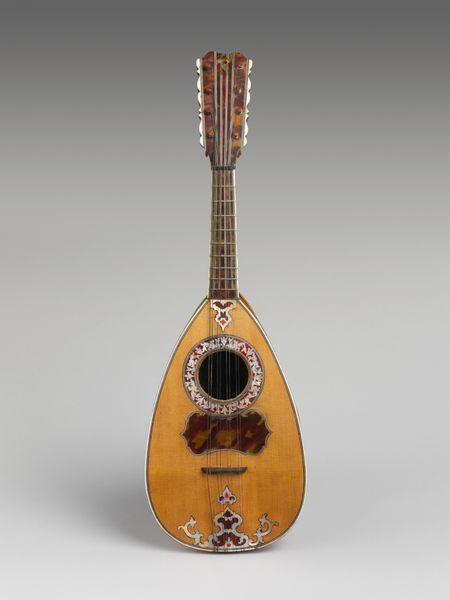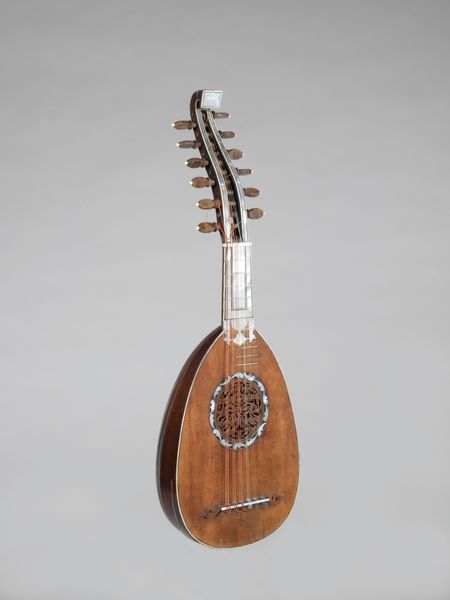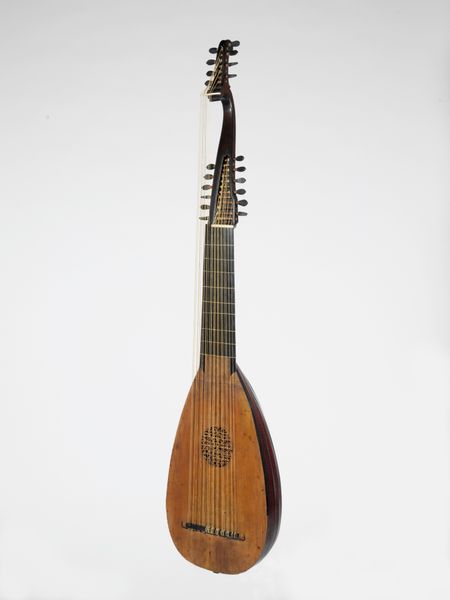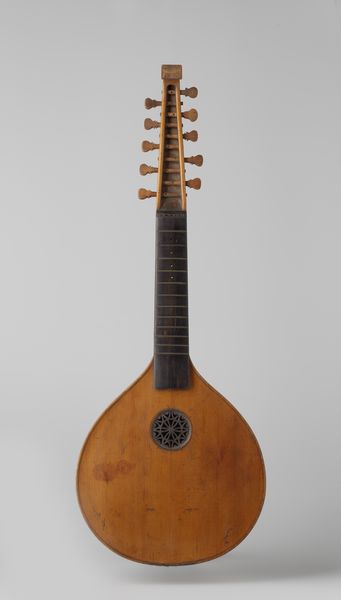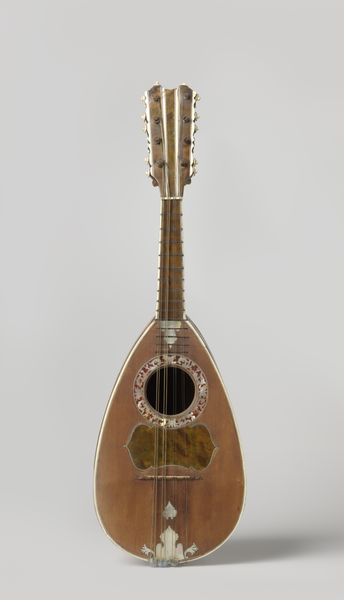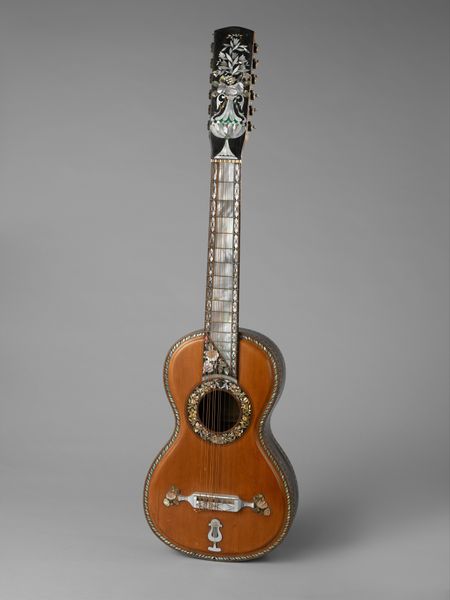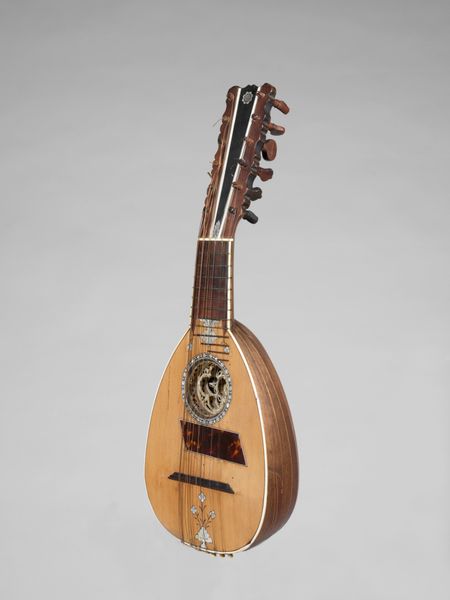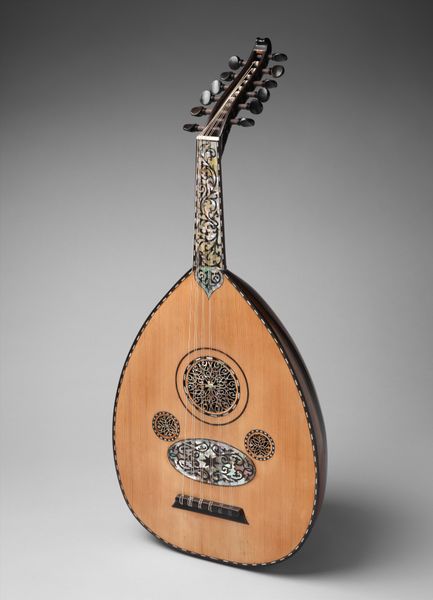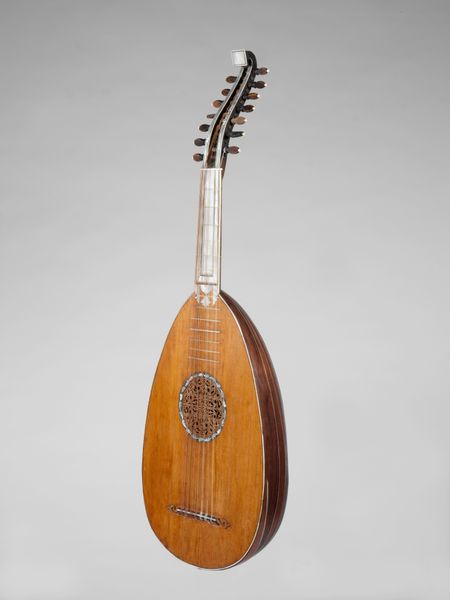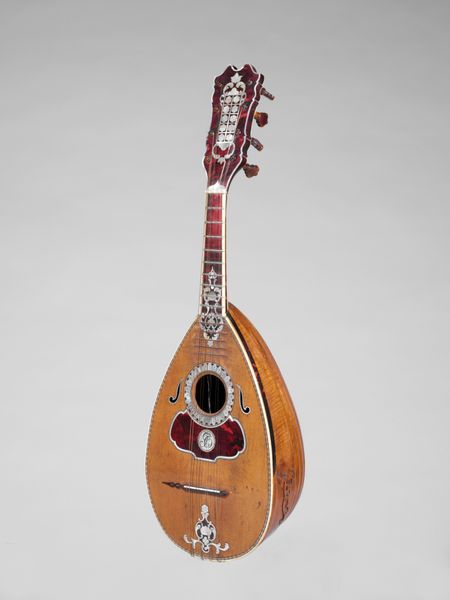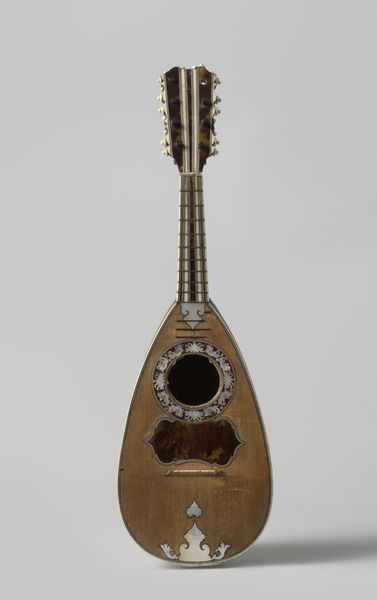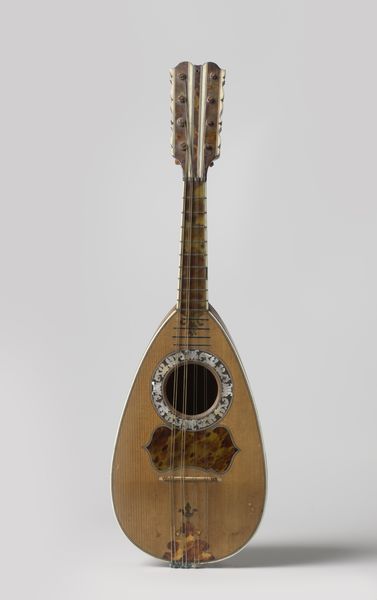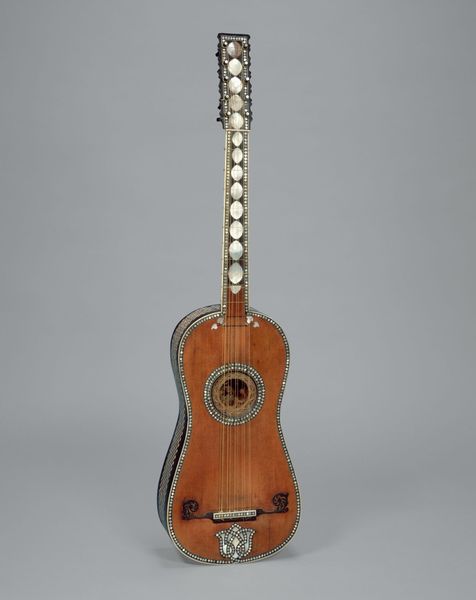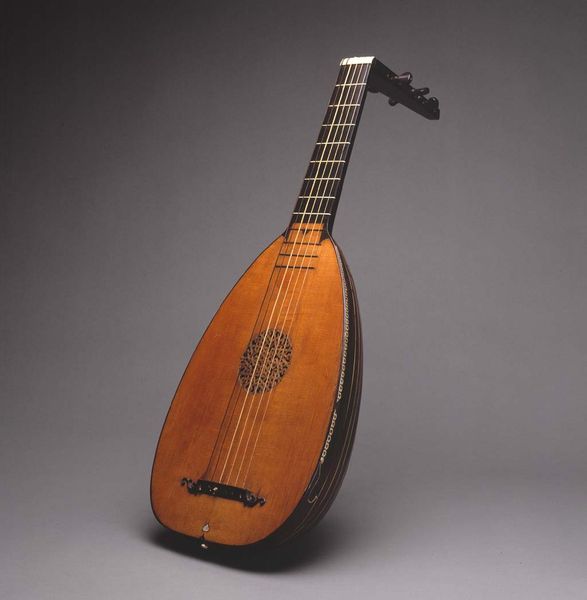
Dimensions: Height: 23 in. (58.4 cm) Width: 7 1/2 in. (191. cm)
Copyright: Public Domain
Curator: So, this mandolin, created in 1781 by Antonius Vinaccia, lives at The Met, offering us a little Baroque sunshine. When I first saw it, it sang to me, even in silence! Did it do the same for you? Editor: It does possess an incredible lightness, a certain playful energy that speaks volumes. These instruments weren't just for music, were they? More about status and performative artistry within social settings, wouldn't you agree? Curator: Absolutely, especially with all this Baroque embellishment and its incredible carvings! Vinaccia wasn't just crafting a musical instrument; he was constructing a social symbol. One that told stories about wealth, sophistication, and, maybe, a little bit of musical talent lurking beneath all that flash. It looks like mother-of-pearl inlay and fancy wood marquetry galore, how else could nobility display their flair in their time? Editor: Exactly. These kinds of mandolins were commissioned objects, intended for display in the context of aristocratic social life and music-making. It says so much about the patronage networks operating at the time and who had access to participate in musical culture. They were signifiers within a rigid hierarchy, and how artists like Vinaccia fit in and navigate that social contract has always fascinated me. What kind of melodies do you think floated from it originally, perhaps? Curator: Something light, almost bubbly... maybe some Vivaldi reworked for plucked strings? Think how it would have been viewed differently by diverse audiences back then, not just royalty at Versailles, but maybe being reworked later into folk tunes? Did the meaning change? How was it later seen when displayed at institutions? Editor: Definitely. Shifting social attitudes, the rise of a music market accessible to more people…museums placing artifacts on display behind velvet ropes that maybe previously were used and touched every day…everything creates another layer, another frame. Curator: Frames and layers indeed. Looking at it now makes you think about who made this music and who got to enjoy this delicate beauty— it all strikes a chord of inquiry. Editor: It certainly does! Thank you, this beautiful, but small and complex piece brings up questions about consumption, class, and legacy within artistic communities across generations.
Comments
No comments
Be the first to comment and join the conversation on the ultimate creative platform.
